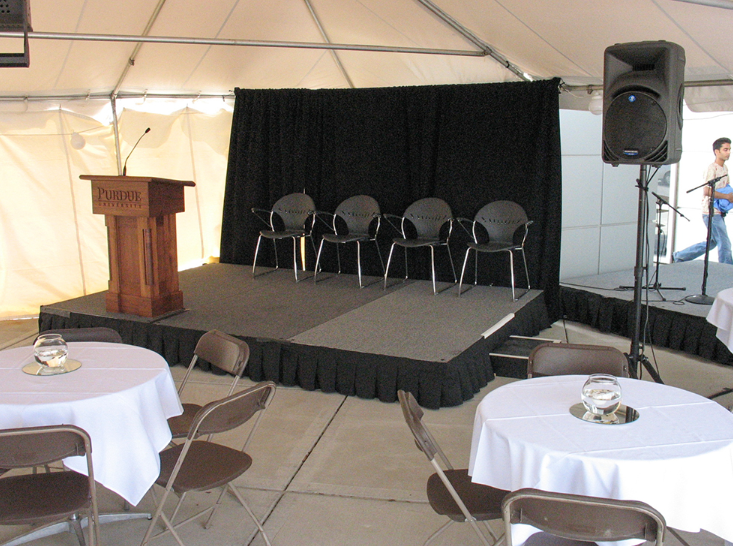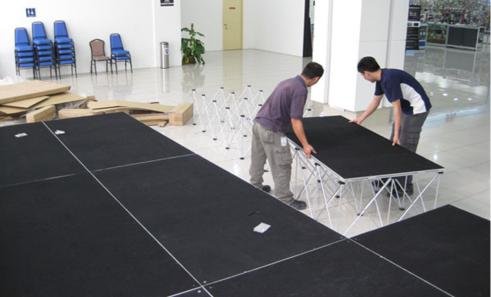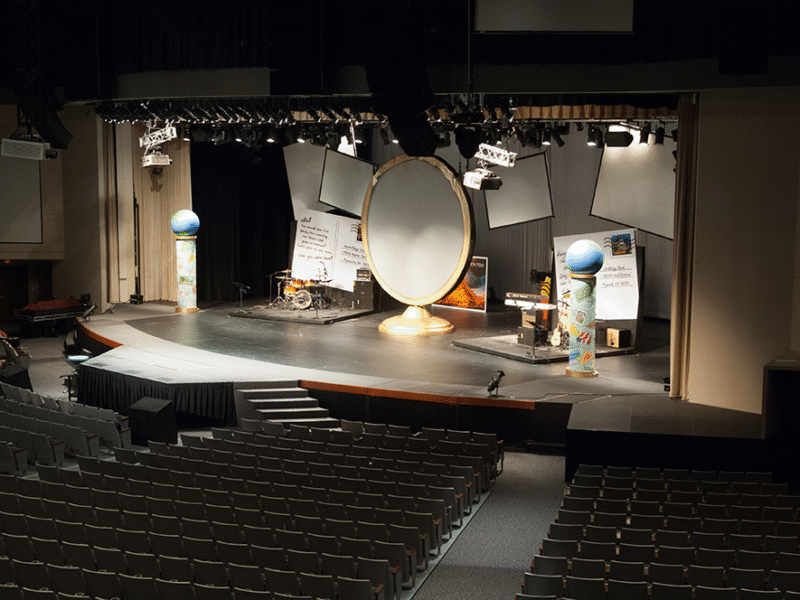When it comes to hosting live performances, presentations, or community events, the right small platform stage can make all the difference. Whether you run a café with live acoustic sets, a school auditorium, a church, or a community center, investing in the perfect stage setup enhances both the performers’ confidence and the audience’s experience.
In this comprehensive guide, we’ll cover everything you need to know about selecting the best small platform stage for your unique venue — from types, sizes, and materials to safety tips and maintenance advice. Let’s help you make an informed choice that meets your budget and elevates your events.
Why Choosing the Right Small Platform Stage Matters
Before diving into the specifics, it’s important to understand why the right stage setup is crucial:
- Performer Confidence: A sturdy, well-designed stage provides security and allows performers to focus on their act instead of worrying about balance or space.
- Audience Engagement: Proper elevation ensures good sightlines, making it easier for everyone in the room to see the action.
- Flexibility: The right stage can adapt to various performance types — from solo musicians to panel discussions.
- Safety: A quality stage minimizes the risk of accidents for performers and crew.
Factors to Consider When Choosing a Small Platform Stage
1️⃣ Venue Size and Layout
First, measure your space. Consider both the total square footage and the ceiling height.
- Room Capacity: A small café may need a stage just big enough for one or two performers, while a community hall might require a larger platform for a choir or group presentation.
- Placement: Think about where the stage will be positioned for maximum visibility without obstructing walkways or exits.
- Portability: If your venue hosts different types of events, a portable or modular stage might be best.
Tip: Create a floor plan and test different layouts before purchasing.
Also Read: Top Features to Look for in a Portable Stage – Buyer’s Guide
2️⃣ Type of Events
What performances or activities will take place on your stage?
- Music Performances: Bands might need extra space for instruments and amps.
- Public Speaking: Lecterns and chairs require less room than musical setups.
- Theater or Dance: Requires sturdy flooring that can handle movement and dynamic performances.
Choosing a stage that matches your typical events will ensure comfort and functionality.
3️⃣ Stage Size
For small platform stages, common sizes range from 4×4 feet panels up to 8×12 feet configurations. Some stages are modular, allowing you to expand or shrink the size as needed.
- Single Performer: 4×4 to 4×6 feet
- Duo or Trio: 6×8 to 8×10 feet
- Small Bands: 8×12 feet or larger
Always leave extra space for equipment, props, or sudden performance changes.
4️⃣ Height of the Stage
Stage height affects audience visibility and performer safety. Typical heights for small platform stages are 8 to 24 inches.
- Low Profile (8–12 inches): Good for intimate performances where closeness is key.
- Standard (16–24 inches): Suitable for larger crowds, ensuring clear sightlines for everyone.
Adjustable height stages offer extra flexibility for diverse event types.
5️⃣ Materials and Construction
Durability is key, especially for venues that host frequent events.
- Frame: Look for steel or aluminum frames — these are strong yet lightweight.
- Decking: Plywood with anti-slip finishes is common. Some stages offer carpet or textured surfaces for added safety.
- Weight Capacity: Always check the manufacturer’s weight rating, especially if you plan to host multiple performers or heavy equipment.
6️⃣ Portability and Storage
If you have limited space, consider a portable or foldable small platform stage. Features to look for:
- Lightweight Panels: Easier to set up and dismantle.
- Wheeled Frames: Simplify transport within the venue.
- Stackable Storage: Saves space when the stage is not in use.
Many portable stages come with rolling carts for hassle-free mobility.
7️⃣ Safety Features
Safety should never be an afterthought. Ensure your stage includes:
- Non-Slip Surface: Prevents accidental slips, especially under stage lighting.
- Secure Connections: Panels should lock together firmly to avoid shifting during a performance.
- Edge Protection: Safety rails or skirting can prevent falls and enhance the stage’s appearance.
8️⃣ Accessibility
If your audience or performers include people with mobility challenges, ramps or steps are a must-have. Many stage manufacturers offer compatible ramps with safety rails.
9️⃣ Aesthetics
A visually appealing stage contributes to your venue’s ambiance. Consider:
- Finish Options: Some stages offer wood grain, carpet, or custom colors to match your décor.
- Skirting: Adds a professional touch by hiding the frame and storage underneath.
10️⃣ Budget
Lastly, set a realistic budget. Factor in:
- Initial purchase price
- Delivery and installation
- Accessories like skirting, rails, or ramps
- Maintenance or replacement parts
While it’s tempting to go for the cheapest option, investing in a durable, versatile stage saves money in the long run.
Popular Types of Small Platform Stages
Understanding what’s available helps narrow your choices:
Modular Stages
These consist of interlocking panels that you can configure in different shapes and sizes. They’re highly flexible and perfect for venues with varying needs.
Pros: Customizable, easy to expand.
Portable Foldable Stages
These are single units that fold up for storage and transport. Ideal for venues that need to set up and break down stages frequently.
Pros: Quick setup, compact storage.
Fixed Small Stages
Built-in stages are permanent fixtures in a venue. They provide maximum stability but zero flexibility.
Pros: Extremely sturdy, professional look.
Top Recommended Small Platform Stage Brands
Some reputable brands to consider include:
- Staging Concepts: Known for high-quality modular and portable stages.
- Intellistage: Offers affordable, lightweight portable stages with easy assembly.
- StageRight: Popular in schools and churches for durable, customizable solutions.
- Portable Stage: Specializes in compact, quick-deploy stages for small venues.
Maintenance Tips for Longevity
Keep your stage in top condition by following these simple maintenance practices:
- Regular Inspection: Check for loose screws, worn surfaces, or wobbly panels.
- Clean After Events: Wipe down surfaces to remove spills, dirt, or debris.
- Proper Storage: Store panels in a dry area to prevent warping or corrosion.
- Professional Servicing: For fixed stages, occasional professional inspections ensure long-term safety.
Common Mistakes to Avoid
Even with the best intentions, some venue owners make mistakes when buying a small platform stage. Avoid these pitfalls:
- Underestimating Space: Always allow extra room for performers to move freely.
- Ignoring Weight Capacity: Exceeding limits can lead to dangerous collapses.
- Neglecting Safety Rails: Skipping edge protection can cause accidents.
- Choosing the Wrong Surface: Slippery surfaces can be hazardous under stage lighting.
- Buying Without Research: Compare multiple brands and read reviews to avoid poor-quality products.
Also Read: How to Find Affordable Portable Staging for Events in the UK
Final Thoughts
Choosing the right small platform stage is a vital step toward creating memorable performances and a safe, enjoyable environment for your audience. Take the time to assess your venue’s size, typical events, and storage options. Balance your budget with the features you truly need — and never compromise on safety.
Whether you choose a portable stage for your café’s open mic nights or a modular setup for a school auditorium, the right choice will pay dividends in professionalism and performer satisfaction.
Ready to Find the Perfect Small Platform Stage?
Start by measuring your venue, listing your requirements, and comparing top-rated brands. With the right information, you can confidently invest in a stage that transforms your events and keeps your audience coming back for more.
Remember: The perfect stage isn’t just a platform — it’s the foundation for unforgettable moments.
👉 Ready to upgrade your venue? Check out our recommended small platform stages:
https://small-platform-stage.onepage.me/
https://manageyourcustomer.com/staging-for-sale/


